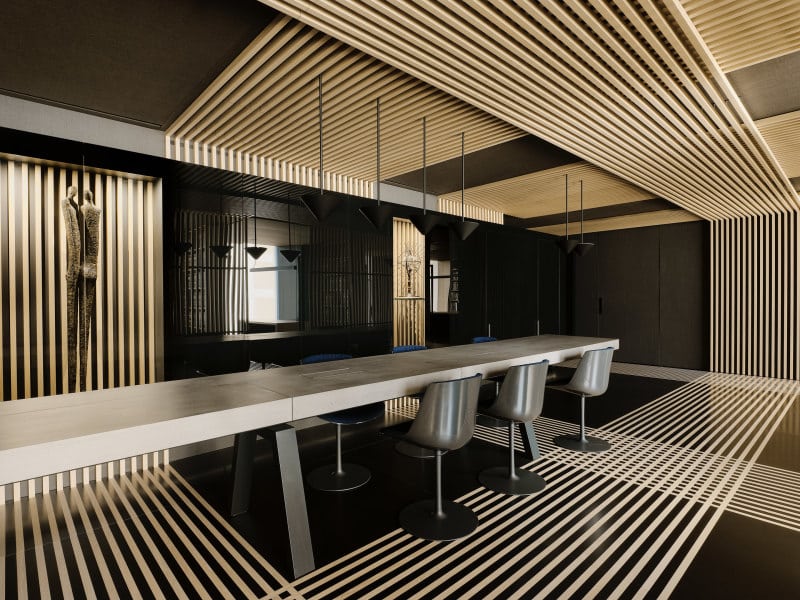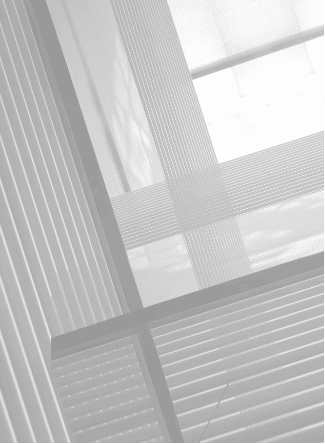Below are selected academic publications by Dr. Deschamps-Braly and his colleagues. They have been chosen for relevance to our patients.

Advantages of Calvarial Vault Distraction for the Late Treatment of Cephalocranial Disproportion
Anthropologists have identified those characteristics which enable them to differentiate the male from the female skull. Some women have masculine skeletal characteristics which, if changed, would improve their facial appearance. Changing the skeletal configuration through bony contouring of the craniofacial skeleton for aesthetic purposes is a natural spinoff of craniomaxillofacial surgery. Techniques for sculpturing the masculine characteristics present in the foreheads of some females are discussed. The deformity has been divided into three subdivisions. Group 1 patients can be treated through bony contouring alone; group 2 patients require bony contouring in conjunction with a methyl methacrylate cranioplasty; and group 3 are those patients with a more severe deformity requiring osteotomies. The technique, results, complications, and patient acceptance are discussed.
Authors: Jonathan S. Black, MD, Jordan Deschamps-Braly, MD, and Arlen D. Denny, MD, FACS
Feminization of the Forehead: Contour Changing to Improve Female Aesthetics
Anthropologists have identified those characteristics which enable them to differentiate the male from the female skull. Some women have masculine skeletal characteristics which, if changed, would improve their facial appearance. Changing the skeletal configuration through bony contouring of the craniofacial skeleton for aesthetic purposes is a natural spinoff of craniomaxillofacial surgery. Techniques for sculpturing the masculine characteristics present in the foreheads of some females are discussed. The deformity has been divided into three subdivisions. Group 1 patients can be treated through bony contouring alone; group 2 patients require bony contouring in conjunction with a methyl methacrylate cranioplasty; and group 3 are those patients with a more severe deformity requiring osteotomies. The technique, results, complications, and patient acceptance are discussed.
Author: Ousterhout DK. Plast Reconstr Surg. 1987;79(5):701-713.
Download PDF: Feminization of the Forehead: Contour Changing to Improve Female Aesthetics
Dr. Paul Tessier and Facial Skeletal Masculinization
The male facial skeleton is larger and more angular than that of the female. The male skull has bossing in the area of the frontal sinuses (there is bossing even without presence of the sinuses—5% of people do not have a frontal sinus) and a small flat spot in the mid forehead between the areas of bossing and usually slightly above them. Also there is bossing in the superior lateral orbital angle. The chin on an average basis is 17% vertically higher in the male and there is more fullness laterally. The angle of the mandible is larger inferioro-posteriorly and generally flares out more laterally. The oblique line is fuller in the male. To date 6 males who have wanted to have a more masculine face have been operated on forehead, chin, and mandible. All 6 have done well and without complications. Their acceptance of this surgery has been great.
Author: Ousterhout DK. Annals of Plastic Surgery. 2011;67(6):S10-S15.
Download PDF: Dr. Paul Tessier and Facial Skeletal Masculinization
Correction of Enophthalmos in Hemifacial Atrophy: A Case Report
This case report describes a technique used for correction of enophthalmos secondary to progressive hemifacial atrophy (Parry-Romberg syndrome). The only previous described technique utilized an orbital floor implant, but this method was apparently only partially successful in correcting the conditions, i.e., it did not correct both the enophthalmos and the pseudoptosis that occurs secondary to intraorbital fatty atrophy. In the present technique, the periorbita was cut at two equators, the globe and the anterior periorbita advanced forward, and the resulting empty spaces filled with thin slices of radiated cartilage. Both the enophthalmos and the pseudoptosis were corrected in a single operation. There were no long term complications and correction has been maintained 3 years postoperatively.
Author: Douglas K. Ousterhout M.D., D.D.S. Ophthalmic Plastic and Reconstructive. Surgery. Vol.12, No. 4, pp 240-244.
Download PDF: Correction of Enophthalmos in Hemifacial Atrophy: A Case Report
Reply: Facial Feminization Surgery: The Forehead. Surgical Techniques and Analysis of Results
The article “Facial Feminization Surgery: The Forehead. Surgical Techniques and Analysis of Results” by Capitán et al. was published in the Cosmetic section as a review of the authors’ experience in 172 forehead feminizing operations. (They do not say whether these are consecutive cases or selected from their experience.) There are a number of errors in this article, only a few of which I am addressing. They imply that all of these cases are type III (see the fifth paragraph in their discussion), meaning that all of their patients had a frontal sinus. It is well known that only 95 percent of people have a frontal sinus. Obviously, this method would not work in those 5 percent without a sinus. It is unlikely that they did not have at least one patient with- out a frontal sinus. If in fact they did not, they did need to be prepared for the event.Author: Douglas K. Ousterhout M.D., D.D.S. Plastic and Reconstructive Surgery. October 2015. American Society of Plastic Surgeons
Closure of Large Cribriform Defects with a Forehead Flap
The use of a forehead flap for closure of a large cribriform plate defect is described in conjunction with a case history. The follow-up of our six cases for periods of four to seven years is reviewed. These six cases are the result of infection (2 cases) and trauma (4 cases). The alternative treatments for closure of cribriform plate defects are reviewed.
Author: Douglas K. Ousterhout, Paul Tessier. J. max.-fac. Surg. 9 (1981)
Download PDF: Closure of Large Cribriform Defects with a Forehead Flap
Volumetric Analysis of Cranial Vault Distraction for Cephalocranial Disproportion
The purpose of this study was to provide an objective analy- sis and quantify the intracranial volume change produced by cranial vault distraction osteogenesis. We recently published a technique to expand the cranial vault by distraction in symptomatic patients with findings of cephalocranial dis- proportion. Resolution of symptoms was documented in that publication. In this current study, we analyzed postdis- traction intracranial volume changes in 11 consecutive patients retrospectively from 10/2001 to 11/2010 with institu- tional review board approval. These 11 patients were treated by cranial vault distraction osteogenesis for symptomatic cephalocranial disproportion.
Authors: Jordan Deschamps-Braly, Patrick Hettinger, Christian el Amm, Arlen D. Denny. Pediatr Neurosurg 2011;47:396–405
Download PDF: Volumetric Analysis of Cranial Vault Distraction for Cephalocranial Disproportion
Hypertelorism Correction: What Happens with Growth? Evaluation of a Series of 95 Surgical Cases
Background: This report documents the authors’ experience with 95 hyperte- lorism corrections performed since 1971. The authors note their findings re- garding outcomes, preferred age at surgery, technique, and stability of results with growth. Methods: Patients were classified into three groups: midline clefts (with or without nasal anomalies, Tessier 0 to 14); paramedian clefts (symmetric or asymmetric with or without nasal anomalies); and hypertelorism with cranio- synostosis. The authors developed a hypertelorism index to measure longitu- dinal orbital position. Results: A total of 70 box osteotomies were performed. Twelve of 95 patients had a bipartition. Six of 95 patients underwent a unilateral orbital box dis- placement or a three-wall mobilization, and seven of 95 had a medial wall osteotomy.
Authors: Daniel Marchac, M.D., Shawkat Sati, M.D., Dominique Renier, M.D., Jordan Deschamps-Braly, M.D., Alexandre Marchac, M.D. Plast Reconstr Surg 2012.
Midface Buttress Framework Reconstruction After Close-range High-energy Injury
We would like to propose a surgical technique for nearly total reconstruction of the midface after close-range ballistic injuries. This technique simplifies surgical execution and allows for nearly anatomical restoration and use of preexisting structures. A maximal length fibula osteocutaneous flap is dissected according to well-established techniques.1–3 The fibula is left attached at the pedicle while pre-fabrication according to a template is performed (Fig. 1 and Table 1). The middle third of the fibula is targeted for the maxillary arch construct. Average arc length of the maxillary arch that needed reconstruction from average adults is 6 to 7.5 cm. A closing wedge osteotomy every 2 to 2.5 cm would produce an arch of acceptable contour and thickness for future dental rehabilitation.
Authors: Christian A. El Amm, M.D., Jordan C. Deschamps-Braly, M.D., Meredith C. Workman, M.D., Christopher C. Knotts, M.D., Kamal T. Sawan, M.D.
Download PDF: Midface Buttress Framework Reconstruction after Close-Range High-Energy Injury



